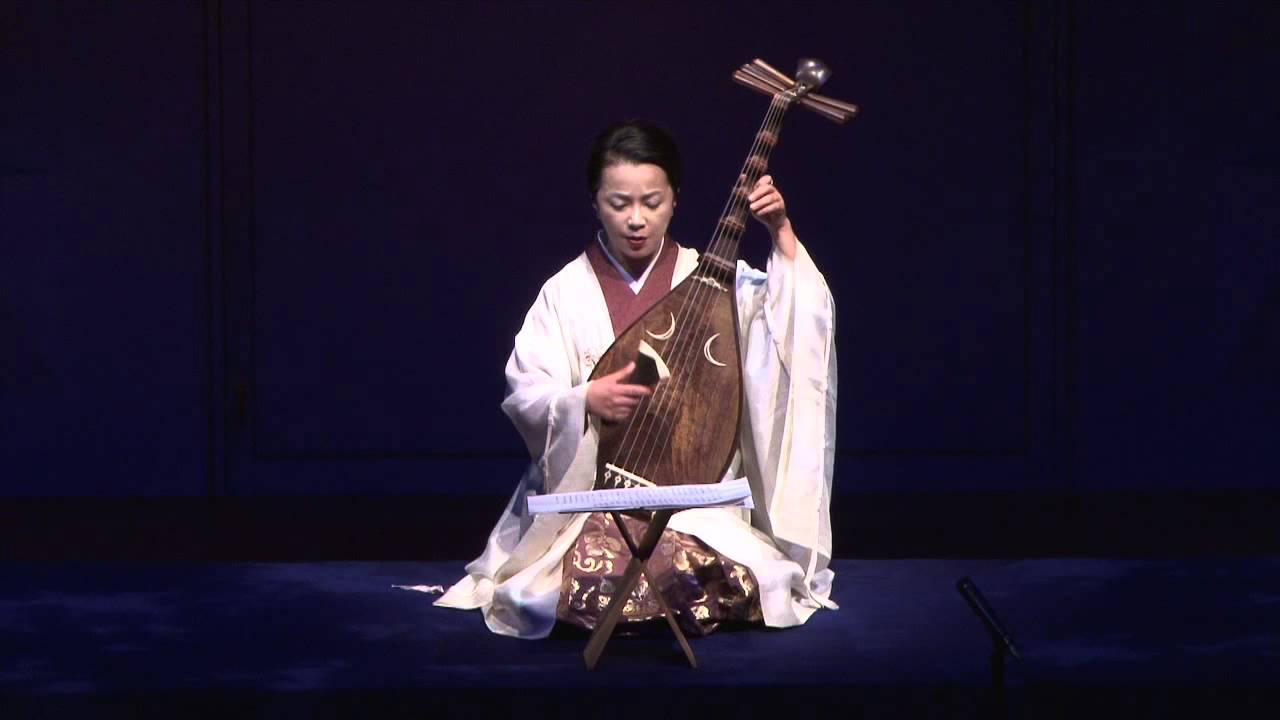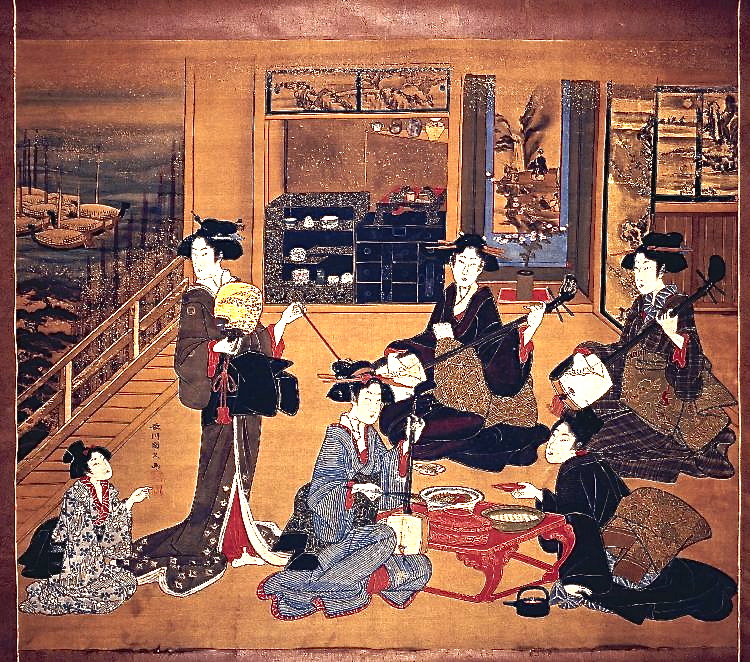Sakura Sakura sung by Miku Hatsune from Vocaloid. | |
| Problems playing this file? See media help. | |
'Sakura Sakura' (さくら さくら, 'Cherry blossoms, cherry blossoms'), also known as 'Sakura', is a traditional Japanesefolk song depicting spring, the season of cherry blossoms. It is often sung in international settings as a song representative of Japan.


Contrary to popular belief, the song did not originate in ancient times; it was a popular, urban melody of the Edo period.
Melody[edit]
Oct 13, 2018 The folk music bands and artists below have played their music all over the world, but they all were formed in Japan. If you think the best Japanese folk music band is missing from the list, then feel free to add it at the bottom so it's included with these other great acts. List bands range from Kitaro to YUI. The Yo scale is a scale used specifically in traditional Japanese folk songs and early music. It is often described as a “bright” sounding scale because it does not contain any minor notes. The Yo Scale Formula: 1, 2, 4, 5, 6. The tsugaru shamisen is a unique style of folk music that grew up in the snowy regions of northern Japan. This site discusses its history, what kids go through to master a traditional art or craft, how often these kids rehearse, and how they spend their time when not in the limelight. Traditional Japanese music is also composed of folk songs. These songs are mainly related to spiritual rituals and daily work. Although information about Japanese music from prehistoric times is limited, later on, Japanese folk music has become popular and has a more important role. Today, many people around the world like these styles! This website is dedicated to the art of Japanese traditional music and a community of professional instrumentalists residing in the U.S.A. We host information on 和楽器 (“wagakki”), instruments such as the Koto, Shakuhachi, Shamisen and Wadaiko.
The 'Sakura Sakura' melody has been popular since the Meiji period, and the lyrics in their present form were attached then. The tune uses a pentatonic scale known as the In scale.
Expressed as diatonic notes in the major scale, the In scale is 3, 4, 6, 7, 8 (1), 10 (3); or the notes E F A B c e[1] (nominally A minor); or in solfège Mi Fa La Ti Do Mi. The melodic scale can either be represented in older Western musical theory by the Phrygian minor or the Phrygian major mode, with the 3rd and 7th notes in the scale omitted.
Because the melody spans a modest range, it is ideally suited to instruments that have a limited pitch range, such as the Native American flute (similar to the Shakuhachi).[2]The melody arranged by Ongaku Torishirabe-gakari was included in Collection of Japanese Koto Music issued in 1888, for beginning koto students in the Tokyo Academy of Music.[3]

Lyrics[edit]
The original lyrics[4] are listed as the second verse in the table below. In 1941, the Ministry of Education published a new verse in Uta no hon (うたのほん 教師用 下) which was listed first, with the original verse listed second.[5]
| Standard | Hiragana | Romaji | Translation |
|---|---|---|---|
桜 桜 桜 桜 | さくら さくら さくら さくら | sakura sakura sakura sakura | Cherry blossoms, cherry blossoms, Cherry blossoms, cherry blossoms, |
Japanese Folk Music Youtube
In popular culture[edit]
- The first lines of the original verse ('sakura sakura yayoi no sora wa mi-watasu kagiri') serve as a prelude to Bon Jovi's song 'Tokyo Road' from their second album 7800° Fahrenheit (released in 1985).
Traditional Japanese Music
- Kidsongs uses its own version of 'Sakura' for I Like To Teach The World To Sing.
- Japanese band BUCK-TICK used this melody in live versions of their 'Victims of Love' song in the early '90s.
- Alfred Reed's 1994 Fifth Symphony 'Sakura' is based on this folk song.
- In 2003, Ōta Jun'ya composed 'Sakura, Sakura ~ Japanize Dream'[6] as part of the credits theme for the video game Perfect Cherry Blossom.
- Dream of the Cherry Blossoms by Keiko Abe, a virtuoso percussionist, is a five-minute piece for marimba that is based on 'Sakura Sakura' that has become popular in the marimba repertoire.
- In 2007, it was selected for Nihon no Uta Hyakusen, a collection of songs and nursery rhymes widely beloved in Japan.
- In early the 2010s, Japanese singer Kiyoshi Hikawa performed the second of the two verses of 'Sakura Sakura' - the first and only Enka singer to do so.[citation needed]
- Yukihiro Yoko, a classical guitarist, made an arrangement for his instrument, a theme with variations, in which he uses different guitar techniques to imitate the sound of the koto.[citation needed]
- Babymetal used this melody in their song 'Megitsune' in 2013.

- In 2013 Marc Edwards recorded an album featuring three 20 minute versions of 'Sakura Sakura', in a free jazz electric guitar style.[7][8][9]
- Many electronic crosswalks in Japan play the melody as 'guidance music'.
- Headhunterz sampled part of this song for his 2017 song 'Path of the Hunter'.
- In Kara, a short film/tech demo created by David Cage and his company Quantic Dream about a robot who is built to serve humanity, the robot is asked to 'sing something in Japanese', after which she sings this song.[10] Eventually, this short film was adapted into a video game, Detroit: Become Human. In the game, one of the main characters, Markus - an android, is trying to put himself together in a junkyard. This references the short film when Markus stumbles upon a dying Kara model, the one from the film, that is still singing the song.[11]
- The song appears in the soundtrack of the video game Total War: Shogun 2, playing during the game's campaign map mode.
- The first fourteen notes plays as Piston Hondo's intro theme in some of the Punch-Out!! games
- Flutist Jean-Pierre Rampal and harpist Lily Laskine recorded a version for their album: Japanese Melodies for Flute and Harp
- Sakura-Variationen (Sakura Variations) is a 2000 trio composition scored for saxophone, piano, and percussion by Helmut Lachenmann.
- Sakura Sakura also appeared on Wii Music as one of the song selections in the Jam Mode.
- In the Tokyo area, each train station has its own distinctive jingle used to signal train departures. The jingle for the Musashi-Koganei Station is based on Sakura Sakura.
References[edit]
- ^Lower-case letters are an octave higher; see Helmholtz notation.
- ^Clint Goss (2011). 'Sakura Sakura'. Flutopedia.com. Sheet music for the Native American Flute. Retrieved 2011-10-10.
- ^Tsuge Gen'ichi (2016). 'Sakura'. komuso.com. International Shakuhachi Society. who cites
Ongaku Torishirabe-gakari (arr.) (1888). '桜 Sakura'. In 東京音楽学校編 Tōkyō ongaku gakkō hen [Tokyo Academy of Music] (ed.). 「箏曲集」 Sōkyokushū [Collection of Koto Music]. 1. Tokyo, Japan. - ^ abc東京音楽学校編 Tōkyō ongaku gakkō hen [Tokyo Academy of Music], ed. (1888). 「箏曲集」 Sōkyokushū [Collection of Koto Music]. Tokyo, Japan.
- ^ abc東京音楽学校編 Tōkyō ongaku gakkō hen [Tokyo Academy of Music], ed. (1941). 「うたのほん 教師用 下」 Uta no hon, kyōiku-yō, ge [Book of Songs for Educational Use]. 2. Tokyo, Japan: 文部省 Monbushō.
- ^ScarletFlameFlandre (2012-06-27), PCB Staff Roll Theme: Sakura, Sakura ~ Japanize Dream (Re-Extended), retrieved 2017-05-03
- ^'Sakura Sakura (3 variations) | Marc Edwards'. Marcedwards.bandcamp.com. 2013-10-22. Retrieved 2014-07-16.
- ^Applegate, Grego (2014-04-17). 'Gapplegate Guitar and Bass Blog: avant free psychedelic metal jazz rock'. Gapplegateguitar.blogspot.com. Retrieved 2014-07-16.
- ^'DogAndPanda Records'. Dogandpanda.com. Retrieved 2014-07-16.
- ^GameSpot (2012-03-13), Kara - Heavy Rain/Quantic Dream Tech Demo, retrieved 2018-06-26
- ^MooniGaming (2018-06-03), Detroit: Become Human Kara Tech Demo Sakura Easter Egg, retrieved 2018-06-26
External links[edit]

| Japanese Wikisource has original text related to this article: |
- [1] Sakura Sakura played in 1959 by three artists from Tokyo's University of Art on three different Koto's (17 string, 13 string and 9 string)
- Sakura Sakura: Scores at the International Music Score Library Project
